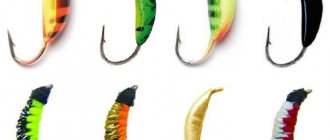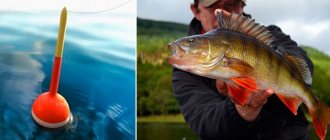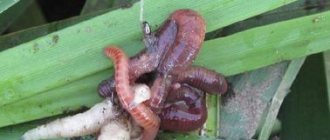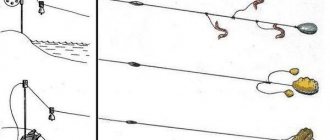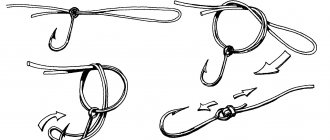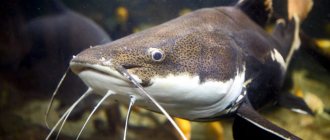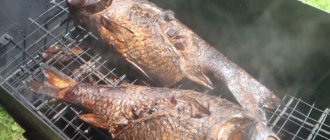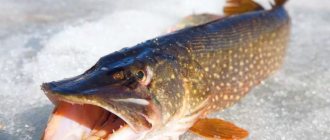History of the creation of the cicada
Among the variety of artificial baits for spinning fishing, cicadas occupy a special place. These spoons are radically different from the usual spinners, spinners and wobblers. Cicada is famous for its high efficiency and versatility. With the help of this spoon, anglers catch predators with equal success using a spinning rod or winter gear. But in order to feel the bite of a large predator, you need to carefully equip the tackle and accurately present the bait. In 1957, a new artificial bait was introduced to the fishing public in America. Its creator was the famous developer James Haddon. The new spinner has received several names, for example, “bladebait”, “blade”, “metal vibe”. But most often the new development was called a cicada. The declassified sample was a flat piece of metal that created strong vibrations in water. American spinning anglers greeted the new product rather coolly and soon forgot about it. However, years later, when previously popular spinning baits no longer met the needs of fishermen, they remembered the cicada. The spinner has received a new life, eclipsing most of the existing baits. “Bladebaits” appeared in the vastness of Russia not so long ago. And they immediately came under the gun of professional spinning players. First of all, the cicada was liked by such predatory fish as perch and pike perch. However, gradually the bait was “tasted” by pike, catfish and even asp. After numerous tests, fishing experts came to a simple conclusion. The bait allows the spinner to experiment while retrieving, then different predators will be interested in the cicada. A compact spinner, armed with a pair of doubles, maintains a stable position when retrieved. This makes the cicada irresistible to predatory fish. The fisherman only needs to choose the right weight of the bait so that it occupies a certain horizon in the water.
Cicada fishing in winter
The real calling of the “cicada” is to catch pike perch with the cicada in winter . The Americans who produce it, I think, have no idea about this. Massive blocks of advertising in the winter issues of the fishing glossy are most likely aimed at the huge demand for this lure in the pre-winter period. After the onset of the first ice season, it is almost impossible to buy a “cicada” in Kazan. “Cicadas” of all sizes and colors are literally being swept off store shelves. A real hit of the season. It should be noted that these lures are practically not counterfeited. True, I don’t know why, I have never seen a copy of “Cicada” on sale (remember the situation with the “castmaster”, which has been copied in different qualities by everyone for ten years now).
The most popular spinners come in sizes 7g, 10.5g and 14g (1/4oz, 3/8oz and 1/2oz). A 14g spinner can be comfortably caught at a depth of 20-23 meters or in the presence of a fairly pronounced current. Models with a fluorescent sticker on the wing are in particular demand. To explain the popularity of the “cicada”, I’ll go back a few years.
My first attempts to catch the “cicada” from the ice were unsuccessful. The endless tangling of the hooks over the thread when tossing the spoon was driving me crazy. The doubles were removed and replaced with a single treble hook suspended from the "body" through two winding rings. The problem of overlap was solved, but the spinner stubbornly refused to “persuad” the pike perch to bite. From time to time I continued experiments with wiring the “cicada”; the successes remained disappointing. Meanwhile, my friend Sergei, a seasoned pike-perch fisherman, continued to catch dozens of kilograms of pike-perch on a cicada. An attempt to find out the secret ended with a demonstration of his spinner. There were two big doubles standing on it! He looked at my spinner and briefly explained: “The cicada doesn’t catch with a tee.” But what about overlaps? Three sentences described the correct animation technique. To describe it correctly, one more digression is required.
The specificity of winter fishing for pike perch on the Kuibyshev Reservoir is that a cut sprat is always attached to the hook of a spinner or jig. This small, alien fish multiplied in the reservoir in huge numbers and became the main food item for pike perch and bersh. The sprat lives in the bottom layer of water, has a narrow body, is numerous and, unlike bleak, always adheres to good depths. This makes it an ideal hunting object for pike perch. You can catch it without adding sprat, but the number of bites will decrease by 85-90%. Typically, sprat is cut into three parts. 2-3 pieces are hung on the tee of the spoon. One piece of cutting, always a small one, is placed on both “cicada” doubles. Two pieces or a large piece of sprat “kills” the game.
Catching a cicada in winter requires its correct animation and it is very unique.
It cannot be thrown like a regular spoon. It is also undesirable to “knock” it on the bottom. This often leads to the twin on the “wing” being overlapped by the thread. When the “bottom” is found, a quick, smooth stroke is made. At this time, the characteristic “trembling” of the bladebait petal is transmitted to the hand. - (TR-R-R-R-R-R). The spoon rises 1-1.5 meters. After a short pause of 2-3 seconds, she descends a step with a smooth sway of her nod. During the “descent” you can take 2-3 pauses for a couple of seconds at different levels. Levels vary. If during the next rise the characteristic “shaking” of the petal is not felt, it means that the sprat has been knocked down or overlap has occurred (this happens rarely).
Bites on the “cicada” always come only on the “descent”, “angry”, with a blow. When “descent”, the pieces of sprat on both doubles sway smoothly, rhythmically and synchronously, this “drives” the pike perch and bersh crazy. The acoustic noise created by the “wing” when lifting the spoon gathers the predator under the hole from a great distance. This type of wiring is basic. There are up to five variations of it, the principle is the same, the whole game is only on the descent. Everyone does it in their own way, finds new “baubles”, and in return the “cicada” feeds its owner with pike perch all winter. A spinner that has undergone light tuning works most effectively; it is not difficult to do this with your own hands. A piece of hardware that has been “polished to perfection” not only catches better, it is purely individual, your work and a piece of your soul have been put into it.
Now regarding the alterations.
First, we change the standard twins; the original ones are good only in the summer, when the piece of iron is devoured. In winter, the cunning and cautious pike perch takes it very carefully. The spoon rarely ends up deep in the mouth. We change the doubles to larger ones (two numbers are just right). You can slightly correct them with a file (the sharpness should be impeccable). This will reduce the number of removals significantly.
No holographic sticker does not play a special role, although yellowish is preferable. People love and demand luminescent. This is understandable; at a depth of more than 10 meters under the ice it is always twilight. The holographic sticker should attract fish with its shine only from afar, reminiscent of the shine of the scales of a live fish, and for a confident bite the predator needs an “aiming point”. For example, “eye”, and it should be as close as possible to the hook. The problem is easily solved. You buy powdered phosphor (sold at all fishing markets), mix a small amount of it with two or three drops of any quick-drying varnish until it becomes creamy thick, and apply it to the body of the “cicada” with a match. After drying, apply one or two layers of clean varnish on top (the phosphor layer is rough and collects dirt). The final touch is to draw the eyes (aiming point) on the phosphor with a marker. Ready! Such a modification increases the number of realized bites by 50%.
That, perhaps, is all about the wonderful creature - the “cicada”.
Try it out, believe in it, and I think cicada fishing will not disappoint you.
Author: Igor Golishchenko (Doctor) https://narubalke.ru/lovlya-na-cikadu.html
Source: fisherman2000.mirtesen.ru
Cicada fishing in winter brings amazing catches, both when fishing for perch, pike and pike perch. Many professional fishermen have long been familiar with this universal bait and successfully use it all year round. The cicada is suitable for vertical fishing and is good for spinning fishing. The bait is quite simple in its execution and at the same time difficult to understand. Many novice fishermen, and even experienced fishermen, cannot find the key to this bait, but the idea of it changes radically when an understanding of this overseas miracle comes.
There is a lot of information about cicadas on the Internet, and there are many descriptions and photographs in fishing magazines. But still, I will repeat myself. Cicada is an oscillating spinner bait with a load in the front lower part of the petal, which has a high-frequency action, excellent flight qualities, and is capable of catching bait at great depths. These baits exist, distinctive in petal shape and of different weights (from three grams to thirty). They are great for fishing at great depths.
Small cicadas from three to seven centimeters catch perch and pike perch well, although pike are often caught. When fishing with a cicada, the hook often gets caught on the main fishing line, since when the bait is dropped, it rolls from side to side and the large degree of freedom of the hook allows it to catch on the fishing line. Of course, the cicada won’t work like that, and it’s not right to make such drops with this bait. Cicada loves a slow and smooth approach to itself. Fishing with a cicada in winter brings results in catching a predator no worse, and in some cases even better, than fishing with a balance beam.
The basic technique for catching cicadas is very simple. We lower the cicada into the hole to the very bottom, after which it must be raised a couple of centimeters from the bottom to avoid overlaps between the hook and fishing line. Then make two or three smooth rises and smooth drops of the bait without touching the bottom. Moreover, the lifting must be done at such a speed that a slight vibration is felt, and the bait must be raised about a meter. This bait maneuver lures a predator from afar. After these steps, you need to shake the bait a little. This is done simply, gently swing the tip of the fishing rod three to five centimeters. A fishing rod with a soft tip is best suited. During the rocking process, you can smoothly lift the cicada higher and higher, and also lower it. When catching a passive predator, the bait is swayed at the bottom with short pauses of two to three seconds. Many cicadas have many holes on their backs, with which you can adjust the aggressiveness of this bait. So, if you hook it into the hole closer to the center of the bait, then the cicada has a more aggressive game, and accordingly, closer to the head part it has a less aggressive game. This must also be used during fishing. When using a cicada at great depths, it would be good if the cicada had a fluorescent coating. Then it will be more noticeable to the predator, and perch generally loves the light green fluorescent color.
As for pike itself, fishing for pike with a cicada in winter is also relevant.
The only difference from catching perch and walleye is the size of the cicada. It has long been known that pike prefer large baits. So, when fishing for pike, it is better to use large cicadas. I have never seen a cicada on sale larger than seven centimeters in size. And in my experience, eight or ten centimeters is the optimal size for pike. I had to make this cicada myself. I will talk about this in another article.
Friends! Please leave your comments. Make a contribution to the development of the site.
Source: pickerel.ru
Peculiarities of cicada behavior in water
Many anglers consider the strong point of the cicada to be good vibration during fishing. • Already with a weak pull on the spinner after casting the equipment, noticeable vibrations are felt in the hand. Thanks to this quality, retrieving can be done at very low speed, which is often required for catching a passive predator or in clear water conditions. • When an angler is looking for a predator on an unknown large body of water, he has to make high-speed retrieves. Many baits cannot withstand such a pace, the game gets confused, and the fish does not pay attention to them. The cicada animation is extremely stable at all speeds. This quality allows the spoon to be used in trolling. Experienced spinning anglers recommend following a simple rule when using cicadas: if the water is cold enough (up to 10˚C), then the bait must be cast as slowly as possible. As the water layers warm up above 12˚C, the animation speed should be increased.
Catching a predator using a cicada
It is good to use bait if winter fishing from ice is carried out in bad weather conditions. Some nuances should be taken into account:
- Pieces of small fish are used as bait, this way the fish are caught better;
- the size of the nozzle is small so that the cicada’s play does not get disrupted;
- For perch and pike perch, fishing is effective if you experiment with wiring at your discretion; they respond well to different actions with the tackle;
- For pike fishing, twisters are placed on the rear twin of the spoon.
Requirements for spinning tackle
The powerful vibration of the cicada is not only an important advantage, but also causes a lot of trouble for the fisherman. The fact is that after several applications of this active spinner, a trembling appears in the hand and some irritation of the nervous system occurs. Each spinning player fights these negative phenomena in his own way. One of them is the careful selection of spinning tackle. If you need to perform uniform, straight-line retrieving of a cicada weighing 10-15 g, then it is better to use a casting spinning rod in combination with a multiplier reel. • The reel drum should hold approximately 70-90 cm per revolution of the handle. • The spinning rod is selected with a test load of 5 to 30 g. • The role of the main fishing line will be perfectly played by a fluorocarbon thread with a thickness of 0.28 mm. With this approach, the tackle will neutralize vibration effects, but remain just as sensitive. Even fishing all day long will not tire a persistent spinner. It is often necessary to install light cicadas weighing up to 10 g on the tackle. In this case, it is better to give preference to a light spinning rod with a test of 3-10 g. The length of the rod should be at least 2.4 m. This limitation is explained by the fact that it is convenient to control the operation of the bait with a long spinning rod at a long distance. The wiring technique can be uniform or stepped. To ensure good sensitivity of the tackle during jigging animation, the following is required: • thin braiding 0.08 mm; • long leash (more than 2.5 m) made of fluorocarbon with a thickness of 0.18-0.22 mm. The high sensitivity of this gear allows you to determine the most accurate bite of a cautious predator. With such a spinning rod you can successfully hunt for perch and pike perch.
Fishing technique
Cicada can be classified as one of those types of baits that work well with different animation methods. The stability of the spoon in the water column is manifested at different speeds both when the bait rises and when it falls. However, professional spinning anglers have identified a number of subtleties that can affect the outcome of fishing: 1. The sinusoidal animation of a cicada represents the trajectory of gentle hills or sand dunes. It is not difficult to make such wiring. After the spoon falls to the bottom, the slack in the fishing line is removed and a calm reeling begins. After this, there is a pause, during which the cicada sinks to the bottom again. Even during the fall, clear vibrations from the action of the bait are felt. At the pause stage, you just need to hold the spinning rod, the rest of the work will be done by the spinner. 2. The following wiring resembles sharp saw teeth. It is performed somewhat more aggressively than the previous type of animation. An important point will be constant monitoring of the bait's performance. It is necessary to lift the cicada from the bottom not only by rotating the reel, but also by sharply swinging the tip of the spinning rod. The result is active and sweeping wiring. This technique is very effective when fishing on a river with a fast current, when a cicada weighing 10 g is used, and the depth of the area is 2-2.5 m. The disadvantage of wiring is the large physical load, which becomes clear after 1.5-2 hours of fishing. In this regard, it is necessary to select very light and well-balanced tackle. 3. There is another catchy technique that involves gently tapping the bait on the bottom. When working with the tip of the spinning rod, you need to make very short steps. The cicada moves forward a few centimeters, sinking to the bottom surface and forming clouds of turbidity. This way you can fish from a boat or from a steep bank, as well as from ice in winter. Even the most passive fish cannot resist this technique.
Cicada fishing
First a little history...
I bought my first “cicada” 6-7 years ago, when I took up spinning seriously and abandoned all other types of fishing. I had practically no experience using “bladebaits”, and I didn’t even know the word at that time. I bought it and that’s it. Liked. Although it was not clear to me how fish could eat this. The predator hardly feeds on live cicadas, and the “cicada” didn’t look anything like a small fish. In April of the same year I tried it in action. I caught it from the shore.
Cicada fishing took place on the Mesha River, which had just opened up from ice.
It's windy, the water is cloudy. I tried different turntables, but without much success. I set the “cicada”, cast and immediately hit - a small pup weighing 700 grams landed. Then more. As a result, four pike up to a kilogram and a dozen marketable perch.
Despite the wind, the overseas piece of iron flew at a distance of 60-70 meters, a sight to behold. You can't throw a turntable like that. The wiring was uniform, usual for pieces of iron. Cast, fall, throw - you shake slowly, but it feels as if a small jackhammer is tied to the other end of the thread. Inspired by success (faith in bait is a strong thing), the next fishing trip, a week later, I immediately started with the “cicada”. The miracle did not happen again; the fish remained silent. Only later did we understand the reasons for the failure. A noticeable cooling over the week has thoroughly clarified the water. The predator underwater saw the bait perfectly and understood well that it was not a fish, but an explosive piece of iron. Since then, I purposefully began to use the “cicada” specifically in muddy water or, if the situation allowed, at the border of muddy and light water. The “Cicada” began to regularly bring fish to me in its small, tenacious twin legs.
The following summer a new incident occurred.
July, noon, we fish together. The boat stands above a steep edge from 4 to 9 meters, which presented us with a dozen commercial pike perch in the morning. Gradually the bite subsided. It's hot even for pike perch. Instead of bites there are indistinct pokes. Here he is native, under the edge. I'm tying the cicada. Together we throw along the edge. Who's next? The iron won. We rewind, on the 5th-6th step from under the eyebrow a comrade has a confident blow. Sweeping. Eat! My "cicada" is already at the boat. I'm changing it to a twister. A dozen friendly casts to the lucky point, the pike perch is silent. I set up the “cicada” again, and we throw it in together. In the middle of the drive, my friend got a confident bite. As they say, “let’s get into the topic,” change baits, and throw. My green twister is becoming more and more noticeably behind the spinner. A pike perch confidently hits him under the edge. Since then, the 14 gram “cicada” has been permanently registered in the box with jig baits, receiving the position of a full-time provocateur.
It should be noted that small “cicadas” (up to 7 years inclusive) are exceptionally good at catching perch that are engaged in group extermination of fry. At the same time, twisters and rippers constantly get their tails eaten off, and the “cicada”, all of itself made of iron, sometimes manages to “persuad” two perches at once. At the same time, unlike a wobbler or a single spinner, it has excellent range, comparable only to a castmaster. This is very convenient when the perch “cauldron” moves significantly away from the boat. In autumn, with significant cooling and clearing of the water, the “cicada” stops working, except in isolated cases of very high predator activity.
Design features of cicadas
When purchasing a cicada, anglers pay attention to some differences in design.
Of particular interest are the holes for attaching to equipment on the back of the spoon. • Models with three holes allow the angler to shift the center of gravity of the bait. In this case, not only the play of the spinner changes, but the depth of its immersion and the speed of its fall. If you use the outermost hole at the tail, the cicada begins to play widely and sweepingly in the water. When hanging the same model from the extreme front hole, you can get fast and crushing play in the horizontal plane. The middle hole is sometimes the most catchable due to the optimal balance of fall speed and amplitude. • Cicadas with one hole and two tees resemble a kind of rocker. This bait works excellently in the vertical plane, flies far when casting, and vibrates strongly during retrieval. The predator is best caught using such a cicada from a boat in a plumb line or from under the ice. Success in catching a predator with a cicada also depends on the precisely chosen fishing location. Experienced fishermen advise using the lure near thickets of grass. Small hooks of the spoon create special turbulences in the water, and small insects and debris fall from algae and water lilies, attracting the attention of a predator. In such areas of the reservoir, the fisherman may be in wait for trophy specimens, the fight with which will cause a lot of unforgettable emotions. Source
Fishing places
It can be difficult to find a place suitable for perch fishing. Especially on weekends, when crowds of vacationers fill the banks of the surrounding reservoirs. The fish move away from the banks full of cars and people. Therefore, you need to start fishing in a quiet place. Of course, you need to start trying to catch perch in places where there is shelter for fish - a fallen tree, a cluster of vegetation. It is worth exploring the border areas, moving the lure along the algae or fallen trees. But remember that perch can be almost anywhere.
